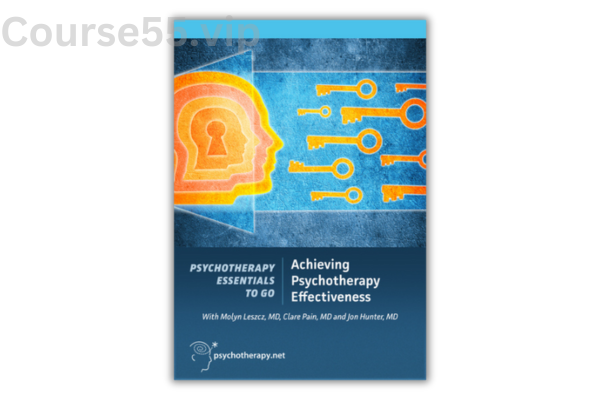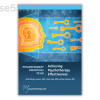Achieving Psychotherapy Effectiveness With Molyn Leszcz, Clare Pain & Jon Hunter
$49.00 Original price was: $49.00.$7.70Current price is: $7.70.
Achieving Psychotherapy Effectiveness: A Comprehensive Review – Digital Download!

Achieving Psychotherapy Effectiveness With Molyn Leszcz, Clare Pain & Jon Hunter
Overview

Achieving Psychotherapy Effectiveness: A Thorough Overview
In the ever-evolving field of mental health treatment, effective psychotherapy is crucial, serving as a guiding light for both practitioners and clients as they navigate the complexities of human emotions. Co-authored by Molyn Leszcz, Clare Pain, and Jon Hunter, Achieving Psychotherapy Effectiveness is a key resource that bridges theoretical knowledge with practical skills to enhance therapeutic outcomes. This book isn’t just a compilation of psychotherapy strategies, but rather a comprehensive guide filled with evidence-based practices aimed at enriching the clinical experience for practitioners at all levels. It includes practical exercises, self-test questionnaires, and real-world case studies, providing crucial insights into the core components that contribute to a strong therapeutic alliance and positive client outcomes. This work serves as a roadmap for both overcoming challenges and achieving success in the practice of mental health care.
Key Concepts and Practical Applications
The Therapeutic Alliance: A Cornerstone of Therapy Success
One of the central themes in Achieving Psychotherapy Effectiveness is the concept of the therapeutic alliance, which is the foundational bond formed between the therapist and the client. This relationship is seen as the essential framework upon which the entire therapeutic process is built. A strong therapeutic alliance fosters trust and openness, allowing clients to engage more deeply with their emotions and life experiences. Leszcz, Pain, and Hunter highlight the significance of this bond and offer several strategies for reinforcing it. Therapists are encouraged to demonstrate empathy and active listening, which creates a safe space for clients to reveal parts of themselves that might otherwise remain hidden.
Furthermore, the book discusses the importance of understanding transference (where clients project feelings from past relationships onto the therapist) and countertransference (the therapist’s emotional responses to clients). Recognizing these dynamics is key to maintaining the integrity of the alliance and navigating complex emotional terrain without compromising the connection with the client.
Managing Transference and Countertransference
Transference and countertransference are not just theoretical constructs; they play out in real-world therapy sessions. The authors provide insightful examples and case studies to illustrate how these dynamics can unfold in practice. They advise therapists to reflect on their emotional reactions and to engage in supervision or peer discussions to better understand these responses.
Effectively managing these dynamics enhances the therapeutic relationship and cultivates the therapist’s self-awareness, ultimately benefiting the therapeutic process. The book also includes practical exercises designed to help therapists identify when transference may be influencing their approach. These exercises function as practical tools that help guide therapists back on track when emotional currents threaten to derail the session, underscoring the importance of both managing these dynamics and using them as an opportunity for growth.
Understanding Client Relationships and Attachment Styles
A notable aspect of the book is its focus on client relationships and attachment styles, rooted in attachment theory. The authors emphasize the importance of understanding a client’s relational patterns and how these patterns impact therapy. For example, a client with an avoidant attachment style may find it difficult to express emotions or engage fully in the therapeutic process.
By recognizing these patterns, therapists can adjust their approach to meet clients where they are, creating a safer space for exploration and healing. This personalized approach ensures that the therapy process is tailored to each client’s needs, rather than relying on a one-size-fits-all methodology.
Practical Tools to Enhance Client Engagement
The authors offer a variety of practical resources to improve client engagement and monitor progress throughout therapy. These include self-test questionnaires, role-play transcripts, and diagrams that therapists can incorporate into their sessions. These tools serve as navigational aids for the complex terrain of psychotherapy, helping both therapists and clients track emotional shifts and gauge the effectiveness of therapy. Self-assessment tools, for example, allow clients to reflect on their emotional state and observe changes over time.
These resources empower clients to take an active role in their healing journey, while also providing therapists with a valuable means of measuring progress and celebrating therapeutic milestones.
Final Thought
In conclusion, Achieving Psychotherapy Effectiveness is an invaluable resource for anyone working in the mental health field. Molyn Leszcz, Clare Pain, and Jon Hunter provide deep insights into the critical elements of therapy, blending theory with practical strategies to improve therapeutic outcomes. The book emphasizes the importance of the therapeutic alliance, transference, countertransference, understanding client relationships, and providing practical tools for engagement.
By incorporating these elements, therapists can enhance the therapeutic process, fostering stronger connections with clients and ultimately improving client outcomes. This book stands as a must-have for both novice therapists and seasoned professionals, offering a roadmap for achieving true effectiveness in psychotherapy.
Frequently Asked Questions:
Business Model Innovation: We operate a group buying strategy, allowing participants to share costs and access popular courses at reduced prices. This model benefits individuals with limited financial resources, despite concerns from content creators about distribution methods.
Legal Considerations: The legality of our operations involves complex issues. Although we don’t have explicit permission from course creators to resell their content, there are no specific resale restrictions stated at the time of purchase. This ambiguity creates an opportunity for us to provide affordable educational resources.
Quality Control: We ensure that all course materials purchased are identical to those offered directly by the creators. However, it’s important to understand that we are not official providers. As such, our offerings do not include:
– Live coaching calls or sessions with the course author.
– Access to exclusive author-controlled groups or portals.
– Membership in private forums.
– Direct email support from the author or their team.
We aim to reduce the cost barrier in education by offering these courses independently, without the premium services available through official channels. We appreciate your understanding of our unique approach.
Be the first to review “Achieving Psychotherapy Effectiveness With Molyn Leszcz, Clare Pain & Jon Hunter” Cancel reply
You must be logged in to post a review.

















Reviews
There are no reviews yet.